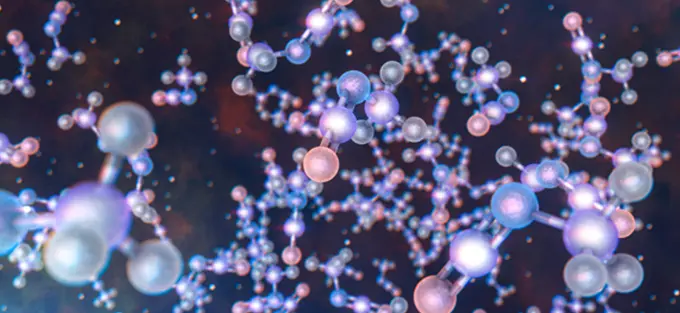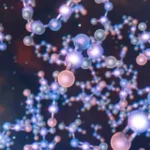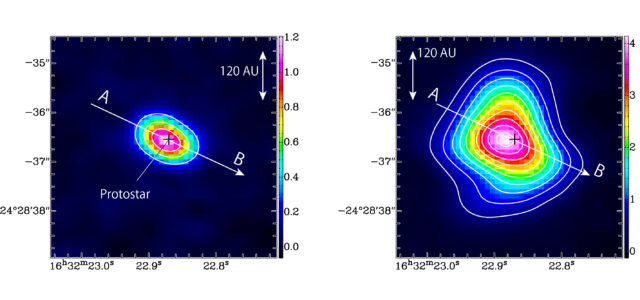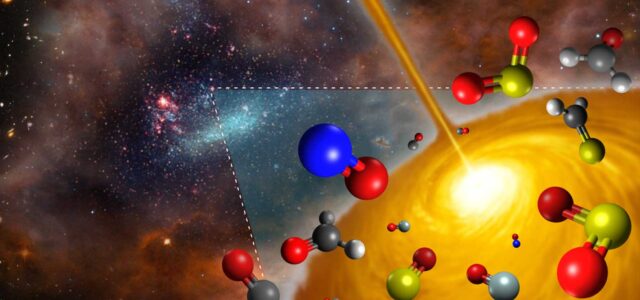ALMA finds life’s building blocks around Sun-like baby stars
Read time: 3 minutes
Nobody knows how life got going here on Earth. But a new ALMA discovery may help solve this riddle. ALMA studied a group of newborn stars. They are surrounded by cocoons of gas and dust – the material from which they formed. These young ‘proto-stars’ are very much like our own Sun when it was still a baby star.
Five years ago, this small group of proto-stars was also observed by ALMA. Back then, astronomers already discovered sugar molecules in the neighborhood of the stars. Not the sugar grains people use in their tea or coffee, but complex molecules of carbon, hydrogen and oxygen. That discovery was already a surprising result.
Now, two teams of astronomers have discovered another complex compound in the dusty cocoons surrounding the stars. It’s a very toxic substance, called methyl isocyanate. But it’s also a molecule that played an important role in the origin of life: methyl isocyanate is involved in the production of amino acids – the building blocks of proteins.
Laboratory experiments have revealed how molecules of methyl isocyanate can form in space. They are produced by chemical reactions on the frozen surfaces of very cold dust particles – almost 260 degrees Celsius below zero.
The same chemical reactions would have occurred in the cloud of gas and dust from which the Sun formed, 4.6 billion years ago. Thus, the new ALMA discovery suggests that important building blocks of life were already present before the Earth was fully grown.
What?

The small group of young proto-stars studied by ALMA is known as IRAS 16293-2422. It was discovered as a source of infrared radiation by the American-Dutch Infra-Red Astronomical Satellite (IRAS). The multiple star system is part of the Rho Ophiuchi complex – a large star-forming region at a distance of some 400 light-years in the constellation Ophiuchus, the Serpent-Bearer. The stars in the cloud are less than a million years old.
Who?
The discovery of methyl isocyanate was made by two separate teams of astronomers. One team was led by Spanish astronomer Rafael Martín-Doménech and his Italian colleague Víctor Rivilla. The other team was headed by Niels Ligterink from the Netherlands and British astronomer Audrey Coutens. At Leiden University in the Netherlands, Niels and his colleagues carried out laboratory experiments to understand the formation of the complex molecules. Both teams have published their results in a British professional magazine, called Monthly Notices of the Royal Astronomical Society.

ALMA URL



